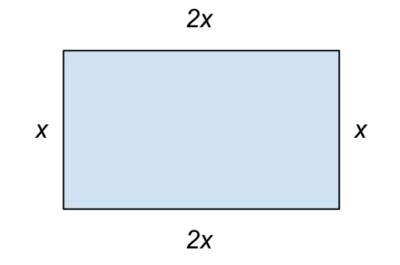Why should we learn algebra?
Do you happen to remember a time when math class suddenly changed from numbers to letters? Probably in late elementary school, once students mastered the basics of arithmetic, the variable x was introduced.
What happened? Math just got mysterious and the mystery was compounded with the unknown x. It was here where we started learning the basics of algebra.
What is algebra? Algebra introduces the idea of variables, where letters represent numbers.
From there, we use algebra to solve equations by setting math expressions equal to each other and using rules of algebra to solve. Solving equations is fundamental to the study of algebra – applying rules to solve for the unknown variable.
Why is Algebra important? Why should we learn it? Let’s look at 5 good reasons to learn algebra.
1. Algebra is a gateway to higher level math classes.
Just about every higher level math class relies heavily on algebra. To advance in mathematics, algebra is crucial.
Just ask anyone who has taken Geometry, Precalculus, or Calculus. You can’t get away from algebra in these courses! They are the building blocks of upper level mathematics. Let’s look at some examples from other high school math courses.
Example – Geometry
The length of a rectangle is twice the width. The perimeter of the rectangle is 48 in. Find the length and the width.
Solution
To solve this problem, draw the rectangle and label the width of the rectangle x. Since the length is twice the width, we can let the length equal 2x.

The perimeter of a rectangle is the sum of the side lengths. Set up the algebraic equation:
x+x+2x+2x=48
6x=48
x=8
The width of the rectangle is 8 inches and the length is 2x, or 16 inches. ◼
Example – Precalculus
Solve the trigonometric equation 2cos2x – 3cosx + 1 = 0 on the interval [0, 2π).
Solution
Notice, this problem is a quadratic equation involving the cosine function. A common method students use to solve this is by u-substitution. Let u=cos x. Substituting, we obtain:
2u2 – 3u + 1 = 0
From algebra, we know that we can factor this quadratic to solve for u:
(2u-1)(u-1)=0
Set each factor to 0 and solve for u:
| 2u-1=0 | or | u-1=0 |
| 2u=1 | u=1 | |
| u=1/2 |
Substitute cos x in for u:
| cos x=1/2 | or | cos x=1 |
| x=π/3 or x=5π/3 | x=0 |
The solutions to the equation are x=π/3, 5π/3, and 0. ◼
Example – Calculus
Calculate: limx->3(x2 – 9)/(x – 3)
Solution
To calculate the limit, the first thing we should try is plugging in the value 3 to see if the limit yields a finite number.
In this case, plugging 3 into our expression (x2 – 9)/(x-3) gives us the indeterminate form 0/0. From algebra, we know that we should factor the numerator which is the difference of squares. We obtain:
limx->3(x – 3)(x + 3))/(x – 3)
Cancel the common factor x- 3 to obtain:
limx->3(x + 3)
Plug in x = 3:
limx->3(3 + 3)
The limit is 6. ◼
2. Learning algebra is good for the brain
Algebra helps students develop upper level reasoning skills. In math, when students moved from arithmetic to algebra, their brains moved from concrete reasoning to abstract reasoning. Working through problems using algebra is an excellent skill for students to develop.
“The abstract-ness of algebra causes the brain to think in totally new patterns. That thinking process causes the brain to work, much like a muscle. The more that muscle works out, the better it performs on OTHER tasks. In simple terms, algebra builds a better brain (as do other disciplines such as learning an instrument, doing puzzles, and, yes, even some video games).”
Source: mathmedia.org)
Generally, math students at the middle school and high school level will end up taking two years of algebra. In the United Kingdom, once students reach the age of 16, they can decide for themselves if they want to continue their math studies. (Imagine that!)
This unique situation provided scientists with an opportunity to compare the students who stopped studying math with those students who continued on with their math education. They discovered that those students who stopped learning math at age 16 had lower levels of a brain chemical that is imperative for brain development and cognitive reasoning.

The researchers at the University of Oxford found that the students who stopped taking math had less gamma-aminobutyric acid, a chemical that acts as a neurotransmitter and helps with math, memory, learning, and reasoning skills.
The researchers followed over 130 students and after 19 months, using cognitive tests and brain scans, were able to determine which students stopped studying math vs. those who continued their math learning. There were NO differences in the amount of the brain chemical between the two groups before the students stopped taking math! (Source: theguardian.com)
3. Algebra helps solve real life problems
As you go about your life, you may encounter situations where algebra comes in handy! Let’s look at some such situations.
Example
You’re headed to Annie’s Chocolate Shop with a crisp $20 bill in your pocket. You’re in the mood for peanut butter cups, as many as you can buy with $20. Annie charges $1.20 for each peanut butter cup. How many peanut butter cups can you buy?
Solution
We can solve the equation:
1.20x = 20
x=20/1.20
x=16.67
You can buy 16 peanut butter cups, that’s pretty good! Notice that you don’t want to round up to 17 peanut butter cups because then you won’t have enough money! ◼

Let’s look at another situation.
Example
A week later, you head back to Annie’s Chocolate Shop with $24 in your pocket. This time, you want to buy peanut butter cups and chocolate bars and you intend to buy twice as many peanut butter cups as chocolate bars. The peanut butter cups cost $1.20 each and the chocolate bars cost $1.60 each. How many peanut butter cups and chocolate bars can you buy?
Solution
Let x represent the number of peanut butter cups and y represent the number of chocolate bars.
Since you’ll buy twice as many peanut butter cups as chocolate bars, one equation is x=2y. The other equation involves the total cost: 1.20x+1.60y=24.
We have the system:
x=2y
1.20x+1.60y=24
Substitute 2y for x into the second equation:
1.20(2y)+1.60y=24
2.40y+1.60y=24
4y=24
y=6
Since x=2y, we have x=2(6) = 12. You can buy 12 peanut butter cups and 6 chocolate bars. ◼
4. Finances and Budgeting
This is another example of how algebra can help us in real life, but it’s so important it gets its own heading! Once you’re out in the world making it on your own, budgeting and managing your finances is a big deal. You’ll have to make many decisions regarding how you’re going to run your household. Algebra can help with that.
Example
You just moved into a new apartment and you need to decide between two different cable providers. Cable ABC charges an initial setup fee of $150 plus another $80 per month. Cable 123 waives the setup fee but charges $95 per month for the same channels. After how many months will the two plans cost the same?
Solution
To solve this, we can set up an algebraic expression for each cable company to see when the two plans will cost the same. Let x be the number of months. Then the cost for the cable providers after x months are:
Cable ABC
150+80x
Cable 123
95x
Set the two expressions equal to each other and solve for x, the number of months when the two cable plans will cost the same.
150+80x=95x
150=15x
x=10
The two plans will cost the same after 10 months. If you know about how long you’ll be in the apartment, you can now make an informed choice to help save money. ◼

Suppose you take out a car loan at a certain percent. You can use algebra to figure out how much your monthly payments will be, how long it will take to pay off the loan based on the monthly payments, or how much total interest you’ll pay over the life of the loan.
5. Algebra can help with your future career
Aside from the obvious choices such as math teacher or scientist, there are lots of jobs that use algebra! As technology advances, the likelihood that math skills will be needed in your career greatly increases.
Let’s look at some jobs that use algebra:
Architects use algebra to calculate important values needed in their designs. They may need to scale something up or down and will use proportions to accomplish that feat. They also use algebra to aid in calculations that will help with architectural designs and plans. Architects use algebra to ensure that the weights and measures of certain structures they’re designing are safe and durable.
Economists use algebra to help with projections and analysis. Since economists use computer technology more and more, the importance of solving equations has become more common in that profession, though computers can certainly help with that! Algebra can help an economist perform a task such as “setting a target growth rate and solving for the required related variables to reach that rate using an established equation.” (Source: indeed.com)
Electricians need algebra to compute the many formulas that are used in the vocation. A simple example of an algebraic equation that electricians use is Ohm’s Law:
I = VR
where I is the current through the conductor, V is the voltage measured across the conductor and R is the resistance of the conductor.
Welders rely heavily on math formulas and algebra. They may need to determine the pressure and volume of the gases. They also need to use functions and equations to understand proportions. And, they use formulas to figure out how the melting point of different metals affects the temperature. (Source: miat.edu)
There’s just no getting around it. Algebra is important! Now you have several ideas as to how algebra is working all around us. So don’t hang up your math shoes just yet.
You can also learn about some other uses of algebra here.
I hope you found this article helpful. If so, please share it with someone who can use the information.
Don’t forget to subscribe to our YouTube channel & get updates on new math videos!
About the author:
Jean-Marie Gard is an independent math teacher and tutor based in Massachusetts. You can get in touch with Jean-Marie at https://testpreptoday.com/.


